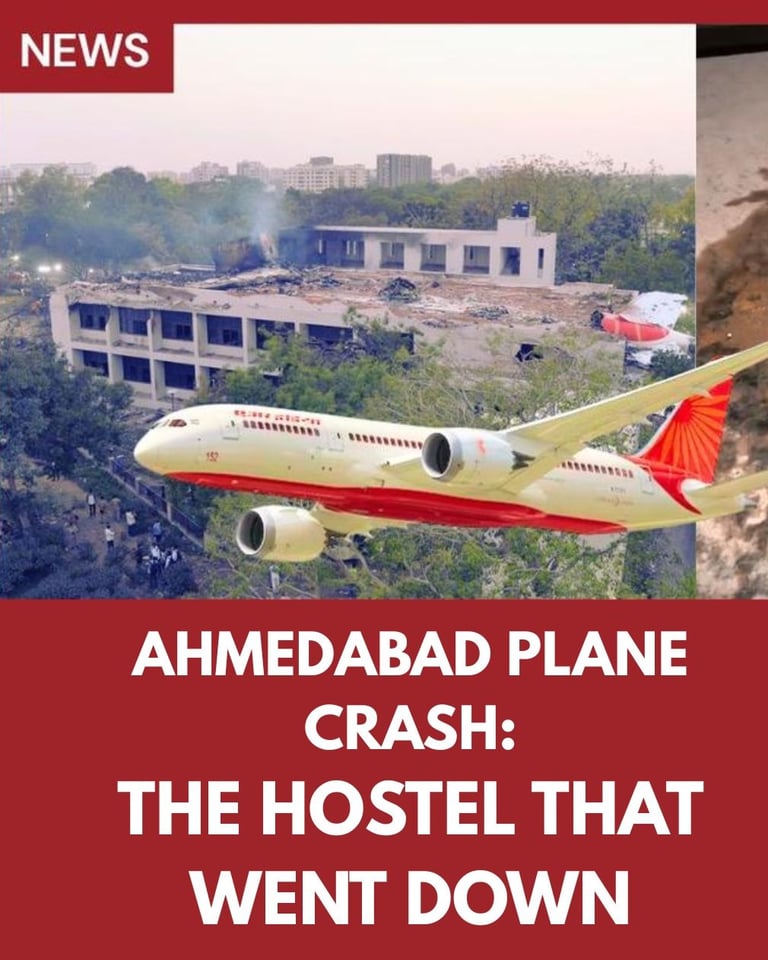Unthinkable Disaster: Untangling the Legal Web of Compensation After Ahmedabad Air Crash
This analysis unpacks the multifaceted legal liabilities arising from a catastrophic aviation accident, examining international conventions, domestic tort law, and judicial precedents governing compensation for victims and property damage.
Adv Sachin Gupta | Partner | Altius Astra attorneys
6/27/20254 min read


The Core Legal Framework: Montreal Convention Takes Flight
As the ill-fated flight was bound for London, it constituted international carriage. Consequently, the primary legal instrument governing liability towards passengers and their baggage is the Montreal Convention, 1999, ratified by India in 2009 and implemented domestically via the Carriage by Air (Amendment) Act, 2009. This treaty establishes a strict liability regime for carriers like Air India in cases of passenger death or bodily injury occurring on board or during embarkation/disembarkation (Article 17).
Crucially, the Convention's scope is limited. It governs passenger injury/death and baggage/cargo. It does not extend to fatalities or property damage caused to individuals on the ground (like the tragic impact on the medical college hostel and surrounding areas), nor to the loss of the aircraft itself ("hull loss").
Three Streams of Liability:
The Ahmedabad crash scenario spawns three distinct liability streams:
Passenger Injury/Death: Governed by the Montreal Convention.
Ground Fatalities & Property Damage: Falls outside the Montreal Convention. Liability here must be pursued under Indian tort law (potentially including principles of negligence or even absolute liability for inherently dangerous activities) and relevant domestic statutes.
Aircraft Damage (Hull Loss): Typically covered by the airline's hull-risk insurance policies.
Calculating Passenger Compensation: The Montreal Convention Blueprint:
For passenger deaths, Article 21 of the Montreal Convention imposes strict liability on Air India up to 128,821 Special Drawing Rights (SDRs) (adjusted as of Oct 2024). This means compensation is payable without the need for victims' families to prove Air India's negligence.
The SDR Mechanism: The SDR, an IMF reserve asset, fluctuates daily based on a basket of major currencies. Converting this to Indian Rupees (approx. 1 SDR = ₹120) yields a base compensation range of approximately ₹1.54 crores to ₹1.82 crores per passenger.
Beyond the Limit: Claimants can seek compensation above this SDR threshold, but must then prove Air India's negligence or that of its agents. The carrier can defend against such excess claims by proving the accident resulted from third-party negligence or was unavoidable despite all reasonable care.
Advance Payments: Article 28 allows carriers to make non-liability-admitting advance payments to meet families' immediate needs. The TATA Group's reported offer of ₹1 crore per passenger likely falls under this provision, potentially offset against final settlements.
No Distinction: The Convention treats death and bodily injury claims under the same liability framework.
How Indian Courts Approach Compensation:
Indian courts have provided significant guidance on computing damages in aviation disasters:
Unlimited Liability Principle (Kerala HC - Mangalore Crash, 2011): While the Montreal Convention sets an initial threshold, Indian courts affirm that the carrier's overall liability for proven damages is unlimited. Claimants must prove their actual losses, either through settlement or civil litigation. Courts encourage carriers to offer reasonable settlements to avoid protracted litigation.
Proving Damages: For passenger deaths, compensation is calculated based on the victim's income, age, dependents, and future prospects. Landmark judgments like National Insurance Co. Ltd. v. Pranay Sethi provide detailed guidelines:
Future Prospects: Additions to established income (e.g., 50% for permanent salaried victims below 40; 40% for self-employed below 40, scaling down with age).
Conventional Heads: Fixed amounts (subject to periodic increases) for loss of estate, spousal/parental consortium, and funeral expenses.
Deductions: Personal living expenses deducted (e.g., 1/3rd for a married person with dependents).
High-Value Precedent (Trivedi Kodkany v. Air India): The Supreme Court awarded ₹7.64 crores to the family of a high-earning executive killed in a crash, applying the Pranay Sethi principles. This underscores that compensation is highly fact-specific and can far exceed the SDR floor for high-income victims.
Ground Casualties & Collateral Damage: Navigating Uncharted Territory
This aspect is legally complex and less codified than passenger claims. Experts like Dr. Sai Ramani Garimella suggest such mass disasters could trigger class-action lawsuits.
Legal Basis: Claims would likely be based on negligence or the doctrine of absolute liability established in the Union Carbide Corporation v. UOI (Bhopal Gas Tragedy) case. This doctrine imposes liability without exceptions on enterprises engaged in inherently dangerous activities (like aviation over populated areas) if harm results.
Evolving Landscape: Class actions for mass ground damage in aviation are a developing area globally. Proving negligence against the airline might be streamlined in such actions due to the sheer scale of the disaster.
Significance & Implications: Why This Matters
This analysis highlights critical points for legal practitioners and the public:
Jurisdictional Nuance: Passenger claims on international flights are treaty-bound (Montreal Convention), while ground damage claims rely on domestic tort law – a crucial distinction for victims' families and their legal representatives.
Strict vs. Fault-Based Liability: Passengers benefit from initial strict liability; ground victims face the harder task of proving negligence/establishing absolute liability.
Compensation Disparity: The legal route significantly impacts potential compensation. Passenger claims have a clear (though complex) international framework and base amount; ground victim claims are less predictable and depend heavily on litigation outcomes.
Mass Disaster Complexity: Events causing widespread death/damage to both passengers and unrelated individuals on the ground create unprecedented legal challenges, potentially paving the way for novel class-action approaches in India.
Critical Timelines: The Montreal Convention imposes a strict 2-year limitation period for filing claims related to passenger injury/death or baggage loss.
Professional Insight: Navigating the Aftermath:
The hypothetical Ahmedabad disaster underscores the fragmented yet interconnected nature of aviation liability. While the Montreal Convention provides a vital, predictable structure for passenger claims – especially with its strict liability foundation, it leaves a significant gap concerning innocent victims on the ground. Pursuing compensation for ground casualties will be an uphill battle, demanding sophisticated legal strategies, potentially invoking absolute liability principles akin to Bhopal, alongside robust evidence of negligence. The sheer scale might indeed catalyze the acceptance of class actions in Indian aviation disaster litigation. For passenger families, while the SDR floor offers some certainty, the Trivedi Kodkany case illustrates that vigorously pursuing proven damages through Indian courts can yield significantly higher compensation, reflecting true economic loss. Ultimately, resolving liabilities stemming from such a catastrophe will be a marathon, not a sprint, involving intricate interplay between international law, domestic tort principles, insurance complexities, and potentially groundbreaking judicial interpretations.
Unthinkable Disaster: Untangling the Legal Web of Compensation After Ahmedabad Air Crash
Beyond the Headlines: The Complex Legal Landscape of Compensation in Aviation Disasters – An Ahmedabad Case Study
The hypothetical, yet devastating, scenario of an Air India Boeing 787 Dreamliner crashing minutes after takeoff from Ahmedabad, tragically claiming over 260 lives and causing significant collateral damage upon impact with the B.J. Medical College Hostel, presents a legal labyrinth of immense proportions. While the human cost is immeasurable, the financial liability, potentially exceeding ₹1,000 crores, triggers complex legal questions: Who is liable? Under what laws? And how is compensation determined?
Altius Astra Attorneys
A premier law firm based in Delhi, India, offering legal representation across various practice areas for citizens rights and interests.
© 2025. Altius Astra Attorneys. All rights reserved.
Contact Us
📞 9899290789, 9818786756
📧 contact@altiusastra.com
3C-ED Block, Madhuban Chowk, Pitampura, Delhi-110034
DISCLAIMER
